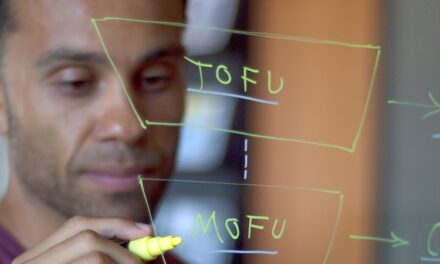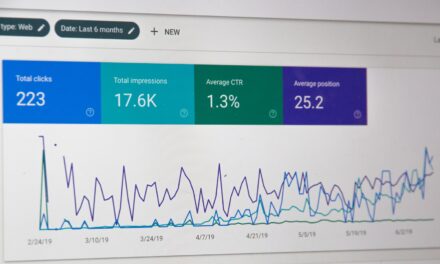Any new role is exciting for the opportunities it holds and nerve-wracking, thanks to the unknown. This can be incredibly daunting if you are stepping in to lead a team or function.
I recently joined Skillable as the Chief Marketing Officer (CMO), a definite leap into uncharted territory for myself and the company. It was the first CMO position for Skillable, which offered unparalleled scope to have a significant impact on growth, market leadership, and product impact.
Privileged to have worked with a couple of the executive team in previous roles, I could immediately focus on the team I would be leading and the impact we wanted to have on both the industry and our customers.
Lesson 1: Listen, listen and then listen again.
The first 30 days as CMO is the most important as they will shape your journey within your new company. The biggest focus at this point is to listen and take in as much information as you can. Get to know your existing customers and how they are using your products. Find out their needs and challenges, how they came across your brand, what else you could do to make them even more successful. Discuss what they think of your industry as a whole and your competitors. Especially in the B2B (business to business) space, customers are extremely knowledgeable about the industry, products and services they are buying. They will have done thorough research before choosing. Therefore, they are a goldmine of knowledge that you can tap into to influence company strategy and priorities, especially product and marketing.
Getting to know your team as humans is also time well spent early on. I feel fortunate to work with an interesting and diverse set of people, and it’s important to know what they need as operators, people, and a team. This includes what makes us unique, like our interests and hobbies, our backgrounds, and family lives. Starting with the people reporting directly to you, find out about the environment, communication style, and processes that will help them achieve their best work. For a working parent, this might be flexible hours; for a neurodiverse team member, this might be wearing noise-canceling headphones or setting focus hours. Once implemented for your direct reports, consider scaling this across your entire team.
Lesson 2: Audit your existing projects and spend
Along with listening, your first 30 days will likely involve auditing. Auditing doesn’t mean coming in and changing things. It’s understanding the what and the why so that if you decide to evolve something, you do it with all the information instead of just your preference. That is, look at what’s being spent, for what return, and assess whether that investment is used most effectively. You may need to optimize your budget, especially in the current economic climate, so consider what areas aren’t giving the best returns. Audit how the teams work together and if there are silos hindering productivity. Concurrent with this, audit your messaging, positioning, and branding. Existing customers prove helpful yet again since they can help you validate any new messaging you wish to experiment with and give their opinion on where your solution fits within the market. If the budget allows, industry analysts can also help with your market understanding, messaging, and positioning exercises.
Lesson 3: Find your quick wins
I was once coached that no significant new changes or decisions should be made before 90 days. After laying the groundwork, you are ready to take action. Your listening tour around key customers and existing team members should have uncovered some ‘quick wins’ that you can implement for near-immediate returns. In Skillable’s case, this involved some updated messaging, outlining buyer profiles, a customer newsletter, building an additional pipeline through targeted digital campaigns, refreshing the sales pitch deck to speak to new prospects (especially since we were moving into a new market), and launching a new website.
You may uncover some skills gaps that need to be filled within your team to implement your burgeoning marketing strategy. This can be created by moving an existing employee laterally into a new position and upskilling them for the role, especially if they are considering a new challenge. If this is the case, bring your team along. Let them know why you think a shift is the right strategy, and allow for feedback and input. Alternatively, you may need to hire for the position or consider a contractor.
Lesson 4: Communicate progress
Sometimes, progress feels small or tactical. But especially early in a new role, it’s important to communicate where you spend your time and why. This helps your leadership understand how you think and strategize and highlights work done across the team. It could be a weekly email to your executive team, a spreadsheet where your team adds their weekly wins, or a short newsletter to the company outlining key marketing moments.
Lesson 5: Become an expert in your space
Becoming known as an authority in your space is one of the most effective ways to build trust in your brand and its products. Early on, I recognized that Skillable needed a strong thought leadership capability to build brand awareness and move into new markets. Likely, your organization will already have potential thought leaders within your existing workforce — look for those who can tell a good story, who are engaging, and who are subject matter experts. Then, they find ways to amplify their voices through PR, events, content, and other channels. Your customers can also become advocates and spokespeople for your brand through case studies, speaker opportunities, and by giving feedback via customer communities and customer advisory boards (CAB).
Build the foundation for lasting results
The last few weeks of your 100 days will likely see you consolidate your different efforts and begin implementing a fully fleshed-out marketing strategy. Whereas the early days of your CMO journey are about listening and experimenting with other ideas, the latter stages should see you focus on how you move forward. By now, you will have a good idea of where to allocate budget, the talent you’ll need (if you still need to fill this), the assets and projects to prioritize first, and the success metrics you’ll use to track progress. Your efforts in the first three months as CMO will give you a strong foundation for the years ahead, with a clear focus informed and backed by your team, customers, and industry influencers. This leaves you to implement, track, and course-correct as needed and hopefully celebrate your wins.

Sarah Danzl serves as Chief Marketing Officer, focused on the global marketing and go-to-market strategies for Skillable.
Most recently, Sarah was Communications Officer and Vice President of Customer Marketing at Degreed. She has been actively involved in the learning space for 15 years, leading marketing and communications efforts in both corporate and startup capacities, especially thriving in high-growth SaaS environments.
When Sarah is not developing new content, she can be found experimenting with new recipes, getting involved in a local nonprofit or walking her two pitbulls at the base of the Rockies in Boulder, CO.





